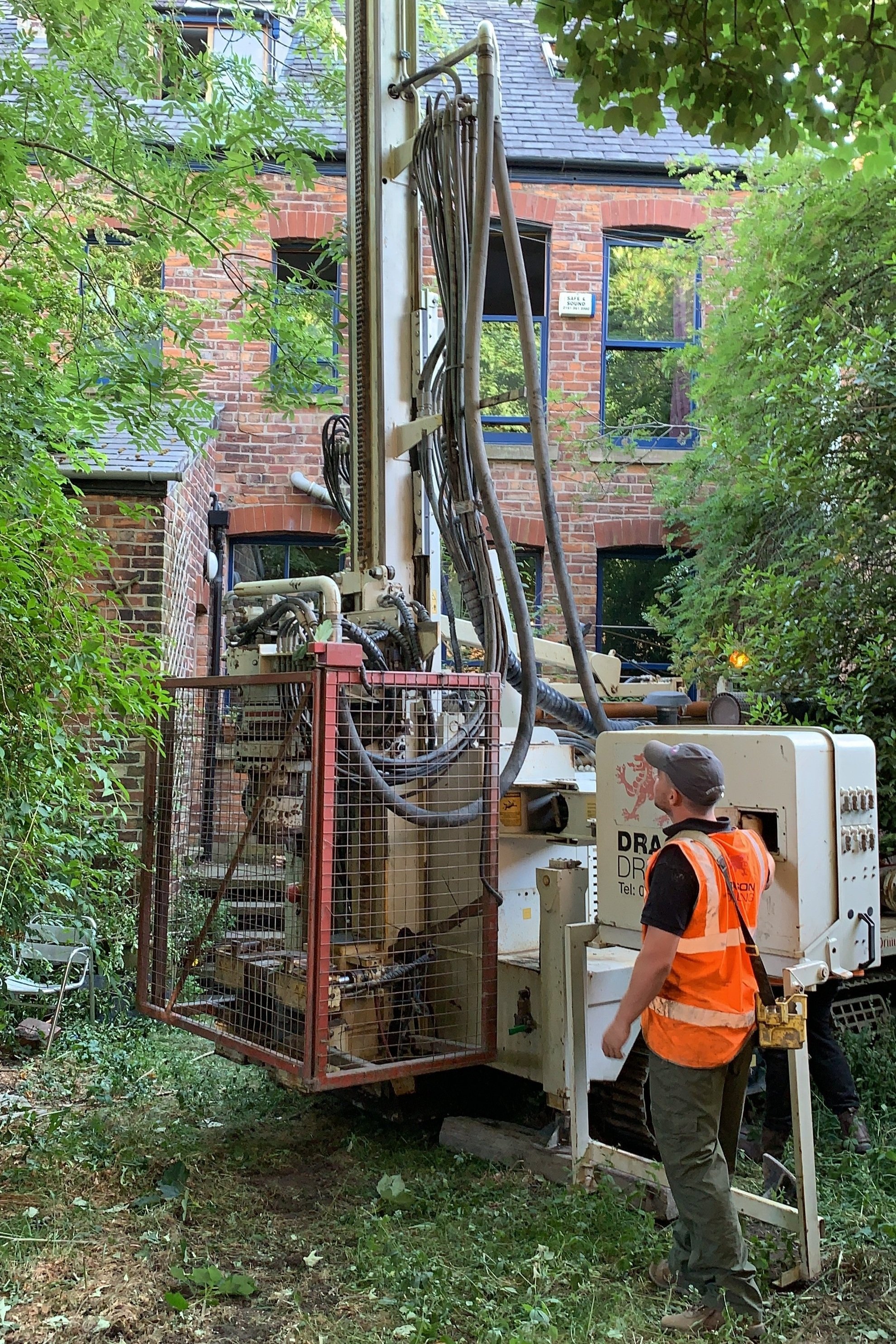
Heating & Hot Water
IN MOST HOMES, CHANGING THE BOILER IS Probably the most cost effective way of reducing emissions.
While this could be a definite choice if your boiler is 15-20 years old, this can also be an option for younger boilers. However, if you want to wean yourself off fossil fuels you need to look at renewable heat sources, including solar thermal, heat pumps and biomass.

OTHER THAN A NEW BOILER, there are VARIOUS renewable options.
Heat pumps
There are various types of heat pumps, but in most domestic retrofit situations there are 2 basic types for use – Ground Source (GSHP) and Air source (ASHP). Water source is a bit specialised and unusual. Air source divides into ‘air to air’ and ‘air to water’. There are also Exhaust Air Source Heat Pumps (EASHP) that can achieve a slightly better performance by retrieving heat from outgoing ventilation.
They all work on the same principle – using the way heat is pulled from, or produced by, liquids turning to gases and back. This is called state change. They all use a compressor that does these changes so heat is pulled from the outside and then the state change goes the other way inside taking the heat previously absorbed and emitting it. Think of it like a fridge – but the bit in the back of the fridge is inside the house, the inside of the fridge is the outside.
Will a heat pump work for your home?
The key figure when working out whether a heat pump will work for you is the Coefficient of Performance (CoP). This is the ratio of electricity put in driving the compressor to the amount of heat in the house.
Crucially, this is not fixed for any given machine it depends on the temperature difference needed. If it is very cold and hot water is needed for washing the CoP will be nearly 1 for many heat pumps. However, if it is designed with a low temperature heating system, such as underfloor, then the CoP rises 3-4 for air source and 4-5. This means that between a third and a fifth of the amount of energy put in is available for use.
Despite the use of electricity this is how heat pumps get to be called renewable heat. However, manufacturers’ CoPs need to be looked at in a similar way to car testing. Heat pumps can produce very good CoPs in controlled conditions, but many have found these difficult to realise in real life. It is worth seeking out independent test data.
The more nuanced figure of available is the Seasonal Performance Factor, which is the same measure as CoP but in use not from a test certificate. In the 2011 Heat Efficiency test from the well respected Fraunhofer Institute, GSHP’s came out averaging 3.88 and ASHP at 2.88.
Gallery: Heating & Hot Water

Solar thermal heating

Ground source heat pump - drilling rig for borehole

Ground source heat pump - installing the pipes into the boreholes

Ground source heat pump - commissioning


